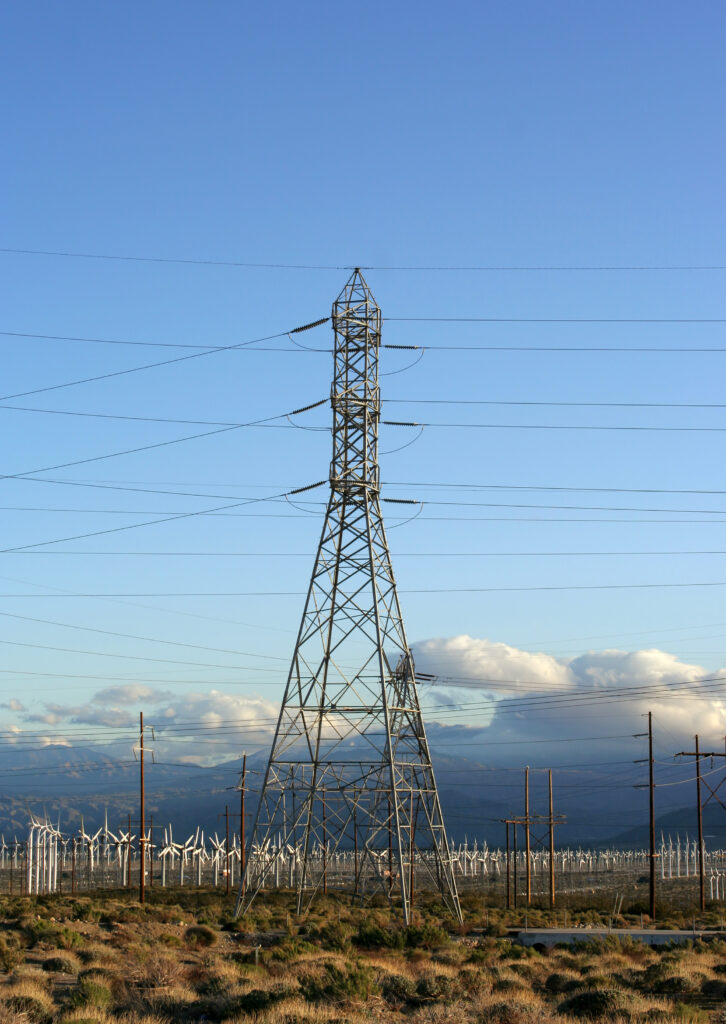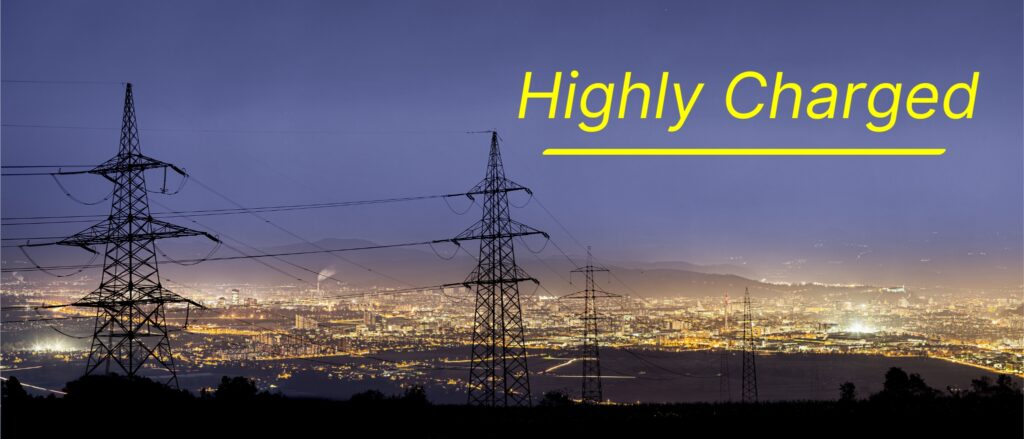We Need a True Debate Over Income-Graduated Fixed Charges
A state bill to cap the fixed charges utilities can collect in California would shut down an important debate about equity and rate design. Here’s a better way forward.
Electricity rate design is unavoidably technical. It also has huge implications for equity, climate change, and ensuring a grid that works. Rate design can be used to promote many different goals, from efficiency to bill stability, but it always entails distributive decisions. Rate design determines how we distribute the costs not just of electricity, but of the shared system that provides that electricity.
And though electricity rate design rarely grabs headlines, it’s been in the news a lot lately, thanks to controversy over the income-graduated fixed charge. That’s a new policy (refresher here) that would change how these costs are currently distributed among residential ratepayers in California.
This policy is mandated by a 2022 law, AB 205, and we’re now almost two years into a public utilities commission proceeding grappling with how that fixed charge should be implemented. Media coverage of the proceeding has improved somewhat in recent months, but on the whole, the public debate has sorely lacked nuance and has amplified the loudest voices in the room, overlooking some valuable input from parties involved in the proceeding. The groups that oppose this policy tend to oppose it fiercely, while supporters generally acknowledge that the details of implementation really matter. The result is a loud, insistent oppose campaign, and quieter supporters focused on getting the details of implementation right.
In a new paper, I seek to provide some context for this debate and then make several recommendations for research institutions, utility commissioners, California lawmakers, and journalists interested in covering this critical issue. It’s called “Highly Charged: An Explainer on California’s Income-Graduated Fixed Charge,” and it’s the latest in a series of Pritzker briefs published by the UCLA Emmett Institute. It’s hoped that this paper, as well as a panel discussion convened at UCLA Law last week, can help clarify the contested visions underlying the technical debates on equity, bill stability, and electrification.
Apart from the investor-owned utilities themselves, some of the loudest voices are stakeholders in the distributed energy industry, many of whom are concerned about California’s shifting policies toward distributed solar, including NEM 3.0. That includes a range of trade groups, private industry, and households that have invested in rooftop solar and enjoy lower electric bills as a result. Many of the opposition’s concerns focus on how decreasing the volumetric (per kilowatt hour) charge for energy would also decrease the financial value of distributed resources like rooftop solar panels. This would impact distributed energy companies’ bottom lines and the financial benefits of rooftop solar panels to the people who own them.
Groups acting in their own financial interest, on all sides, have driven much of the controversy. But there are also important substantive disagreements among environmental and environmental justice groups, along with others working in the public interest. Shifting the incentives for rooftop solar built into electricity rates, for example, has implications for decarbonization, in addition to rooftop solar companies’ profits—one debate centers on the implications of this shift. This coalition, which includes a range of environmental organizations, has proved to be a powerful political constituency urging a legislative about-face. On the other side, Communities for a Better Environment, California Environmental Justice Alliance, and NRDC, among others, have written in support of an income-graduated fixed charge, if it’s done right. The combination of good faith disagreements and well-resourced private industries on both sides has contributed to the lack of clarity on this issue.
These debates and dueling interests are the context behind AB 1999, a bill that would repeal provisions of the 2022 law and reinstate a $10 cap on the fixed charges that regulators could apply. But this repeal campaign would effectively abandon an important (if highly technical) debate that we should be having in California about our values, and about equity in rate design as we approach the next phase of the energy transition. By shutting down the income-graduated fixed charge proceeding, particularly without clarifying the widespread misconceptions on the issue, the repeal campaign would leave us no better equipped to collectively make sense of the next rate design controversy, when it inevitably arises.
 It’s critical that lawmakers have the best information about the choices in front of us when it comes to rate design so they can ensure their values, and those of their constituents, are represented. Electricity rates are different from other forms of pricing, so the answers aren’t always intuitive. Rate design often implicates competing values, and distinct tensions are built into the electric system: Investor-owned utilities are profit-driven corporations… to which we have outsourced the provisioning of a public necessity. Conservation of electricity is crucial… but so is increasing the use of electricity through the displacement of gas vehicles and appliances by their electric counterparts. Responsible residents should be rewarded for investing in renewable generation… but not at the expense of renters and lower-income Californians who don’t have the resources to do so. And distributed generation companies have a crucial role to play in decarbonizing the energy system… but they remain, like investor-owned utilities, private companies structurally driven to pursue a profit motive. Designing rates responsive to all these tensions is a nuanced undertaking.
It’s critical that lawmakers have the best information about the choices in front of us when it comes to rate design so they can ensure their values, and those of their constituents, are represented. Electricity rates are different from other forms of pricing, so the answers aren’t always intuitive. Rate design often implicates competing values, and distinct tensions are built into the electric system: Investor-owned utilities are profit-driven corporations… to which we have outsourced the provisioning of a public necessity. Conservation of electricity is crucial… but so is increasing the use of electricity through the displacement of gas vehicles and appliances by their electric counterparts. Responsible residents should be rewarded for investing in renewable generation… but not at the expense of renters and lower-income Californians who don’t have the resources to do so. And distributed generation companies have a crucial role to play in decarbonizing the energy system… but they remain, like investor-owned utilities, private companies structurally driven to pursue a profit motive. Designing rates responsive to all these tensions is a nuanced undertaking.
One point of contention among environmental groups is how to set rates that strike the right balance between the state’s electrification goals and its longstanding electricity conservation rate design principle. Rate design is a limited toolkit: it can’t distinguish between the kinds of electricity increases we want (those that result from the displacement of gas appliances and vehicles by their electric counterparts) and those we don’t want. This sets electrification and conservation goals in tension in the context of rate design. The proceeding includes many pages of debate and analysis on how various fixed charges would impact this balance.
The technical debates of this kind that fill the proceeding’s hundreds of filings, however, also reflect deeper divides over the future of the electric system. One divide is about the role of distributed electricity generation, but a deeper disagreement is about distributed control (which can but doesn’t necessarily accompany distributed generation). The divide is about power—the political kind—and whether using distributed generation as a vehicle to decentralize power in the electric system is more likely to promote a) a more democratic system or b) a privatized system, concentrating power in the hands of those who can afford it while disinvesting from our current system of publicly-regulated provisioning. It’s only natural that narrower changes to the electric system, like the income-graduated fixed charge, become proxy battles for this enormously important discussion, but we should be having it explicitly as well.
From philosophical divides to concrete debates over electrification economics, the income-graduated fixed charge issue is multifaceted: there are multiple perspectives and values at stake. Last week the UCLA Emmett Institute convened a panel discussion to dig deep into just one of these facets: the equity implications of an income-graduated fixed charge.
We sought panelists who could both speak to the technical details of electricity rate design and who center equity and the needs of low-income Californians or renters in their work. We heard from Chelsea Kirk at Strategic Actions for a Just Economy; Sylvie Ashford at The Utility Reform Network; UCLA Energy Law Professor William Boyd; Ankit Jain from the Rates Discounts Section of the California Public Utilities Commision’s Energy Division; and Nihal Shrinath from Sierra Club. A recording of the session is available here.
What follows are some of the key takeaways from the discussion:
Chelsea Kirk of Strategic Actions for a Just Economy:
“When designing decarb efforts, we do really need to be thinking about renters… almost half of California households are renter-occupied households and renters have particular vulnerabilities to this transition to all-electric. I don’t know if you saw the recent UCLA Luskin report that came out today. It was a quality-of-life survey of renters in LA County and many were like: ‘I fear for homelessness. I can’t afford rent. I can’t afford food.’ And decarbonization is expensive, so we need to be designing policies in such a way that minimizes these negative unintended consequences. We can’t have a strategy that seeks to advance on our climate goals while exacerbating our housing crisis.”
Nihal Shrinath of Sierra Club, in response to the question: Do income-graduated fixed charges necessarily, or could they, mark a shift away from California’s longstanding conservation goal?
“They don’t have to. Income-graduated fixed charges do not necessarily throw away California’s longstanding conservation goal. Sierra Club historically has been vehemently against fixed charges for two major reasons: because they harm low-usage customers and low-usage customers tend to be historically low-income customers and customers who’ve implemented environmental savings mechanisms: rooftop solar, energy efficiency devices, smart meters, anything that will kind of get your usage down.
A few realities on the ground changed our position. One is climate change has changed the nature of usage across California. We have more extreme heat days than ever before, you see that reflected in cooling bills. So you don’t have as clear a gradation between low-income and high-income customers in terms of their usage; you have major pockets of low-income customers who use a lot of energy because they are renters who have no choice about whether their house is insulated… Another thing that changed the equation is that rates in California are extremely high and at some level you can’t just say we’re going to keep volumetric rates exorbitantly high and impoverish millions of people in order to preserve a theoretical behavioral conservation goal. And then of course the income-graduated nature of it.
If we’re pushing electrification policy, we don’t want folks to be economic losers from electrification. So in the just transition and in further policies that are good for climate, we do want electrification of residential and commercial buildings and we want that to be an economic win and the way to make that an economic win is to reduce the volumetric rate so that when you do electrify low-income homeowners in the Inland Empire and they are switching off of gas, they’re saving money.”
Professor William Boyd of UCLA Law School:
“[The income-graduated fixed charge] is a highly charged issue. It is a highly technical issue. One of my favorite environmental historians, Richard White, wrote a great book on the Columbia River in which he writes that few topics make the eyes glaze over and the mind wander like rate design. But it’s so important, because the rate structure or rate design of a necessity like electricity really reflects the values of the community, as filtered through public policy.”
“In an era of decarbonization—where we’re making massive investments across the whole system and we have to find ways to recover the costs of those investments in a way that at the same time ensures accessibility and affordability—it has really brought some of those questions of rate design front and center. And I think the income-graduated fixed charge is a good example of an experiment—an attempt to figure out how to deal with a rate structure that is making access and affordability difficult for a fairly sizable chunk of the population, recognizing that we can’t really decarbonize if we don’t ensure access and affordability and try to pull out some of these fixed charges that have really added to the affordability problem in California of electricity.”
Sylvie Ashford of the Utility Reform Network, in response to a question about whether the fixed charge increases utility profits:
“This fixed charge does not increase utility revenue or profit in any way. If it did, we would oppose it—we’d be the first ones to oppose it. The costs are determined in other proceedings and that’s where the major effort needs to be. We want other parties to please join us in the general rate cases and pay attention when the utilities are asking for billions and billions of dollars because that’s where the rate increases are coming from; that’s where the record profits are coming from; and that’s what has to be kept in control to stop these absurd rate increases that are far outpacing inflation and have one in five California households in utility debt.”









Very interesting!! I have no idea what I think yet.
In the linked letter from opponents, it said only “CARE” and “FERA” program members would see the lower charge – does this mean that the income adjustment doesn’t go all the way up? I didn’t know that, if it’s true. (Not that I’m surprised.)
I will say, long distance lines would be good to keep, if that will allow for interstate transfers – because I like that idea of solidarity. Things are going to get bumpy.
I don’t like what the PUC did – I am unclear on how adding all that solar power during the day made costs actually go up? Though I know there are many variables. But it seems like that should have made energy cheaper, since it left more of it around for everyone else (or so I would think).
Perhaps we should also talk about having more publicly owned utilities.
Thanks for your comment! Yes, that’s right. The March proposed decision for the IGFC only includes three brackets: one for CARE, one for FERA + affordable housing residents, and one for everyone else. It’s important to note though that this is an ongoing process and the proposed decision is for a “first version.” The first version was limited to one that relied on existing income verification processes for CARE and FERA because of concerns over how to implement an income verification program for all ratepayers on a short timeframe. So theoretically, this would be a first version and the proceeding filings contemplate future versions. We shall see!